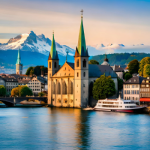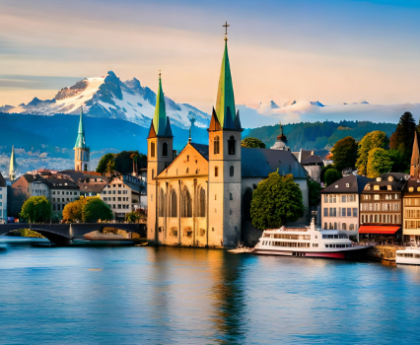:max_bytes(150000):strip_icc()/Tallulah-Gorge-Georgia-USASWIMHOLES0718-314a4419cd734979a6be6ff6e28bae1c.jpg)
When summer heats up, nature offers plenty of locations to cool off surrounded by spectacular scenery. America’s natural swimming holes range from magnificent waterfalls with rock slides to crystal-clear creeks to warm and inviting geothermal pools.
We’ve compiled a list of some of the best swimming holes in the U.S., whether you’re looking to relive your days jumping off of rope swings or simply enjoy a refreshing dip after a hike. Since many of these spots are within national parks and state forests, you should follow each park’s regulations regarding when you can safely enter the water and what items are allowed in or near each location to maintain their pristine natural beauty.
Firehole River Swimming Area, Yellowstone National Park, Wyoming
The country’s first national park, Yellowstone is famous for its geothermal springs. Since most of these scalding waters are too hot to swim in, the next best option is the Firehole Swim Area, located along the Firehole River and fed by thermal activity below the surface.
The popular swimming area typically opens mid-summer, allowing visitors to enter the bathtub-like waters during designated hours. There are no lifeguards, so visitors will want to keep that in mind for safety and follow the regulations.
To reach the location, head to Firehole Canyon Drive, located south of Madison Junction, and follow the route to the swimming location. While it might be tempting, avoid cliff jumping in the area, as it is not only dangerous but also forbidden.
Diana’s Baths, Bartlett, New Hampshire
This string of pools linked by small cascades on New Hampshire’s Lucy Brook in Bartlett is a popular spot for families in the summer thanks to its easy accessibility via a short hike. The trail can get wet, so waterproof hiking shoes are recommended.
When the water levels reach peak flows, which vary throughout the year, the setting puts on a fantastic natural show. It does get crowded, so come early if you want to photograph the pools without anyone in them.
Blue Hole, Santa Rosa, New Mexico
New Mexico’s Blue Hole gets its name from its sapphire-blue waters that stay at a constant temperature of about 62 degrees Fahrenheit. Popular among scuba divers and cliff jumpers, the swimming hole is open year-round, giving you a chance to explore its underwater corridors even after summer ends. There’s also a visitor center with exhibits, a snack bar, changing rooms, restrooms, a gift shop, and a viewing area.
Blanchard Springs, Mountain View, Arkansas
You’ll find two swimming areas at the Blanchard Springs Recreation Area in the scenic Ozark National Forest, both of which are fed by the waters of North Sylamore Creek.
The main swimming area provides a wider and more shallow swimming experience, as well as bathhouses and a small pavilion. The second swimming area sits adjacent to the campgrounds and can reach depths of up to 12 feet with a bluff line that runs through it. There are no lifeguards on duty, so swim at your own risk.
Chena Hot Springs, Fairbanks, Alaska
Taylor McIntyre/Travel + Leisure
For a relaxing dip, the Chena Hot Springs Resort in Fairbanks, Alaska offers a natural hot spring-fed lake that stays around 106 degrees Fahrenheit year-round. There’s a reason this spot ranks among the best hot springs in the U.S. — the outdoor setting, which sometimes offers views of the aurora borealis, makes for an ultra-romantic getaway, though you don’t need to stay overnight at the hotel to visit.
Once you’ve gone for a swim, visit the resort’s Aurora Ice Museum. Billed as “the world’s largest year-round ice environment,” it features everything from rooms and sculptures to an ice bar crafted from more than 1,000 tons of ice and snow.
Havasu Falls, Havasupai Indian Reservation, Arizona
These falls, located within the Havasupai Indian Reservation in the southwest corner of Grand Canyon National Park, attract visitors thanks to their bright blue and green waters and the surrounding travertine rock formations.
While visiting the falls requires a permit and more than an eight-mile hike in each direction, that hasn’t stopped tens of thousands of tourists from traveling here annually to admire the location’s beauty. Keep in mind that you’ll need to make reservations well in advance.
Homestead Caldera, Midway, Utah
Head to Homestead Resort to swim in the only warm water scuba diving destination in the continental U.S. The Homestead Caldera was formed around 10,000 years ago when melting snow from the nearby Wasatch Mountains seeped into the ground. Swimmers, divers, and snorkelers can explore the warm, mineral-rich waters, which stay at a constant 90 to 96 degrees Fahrenheit.
While the swimming hole is located within a 55-foot-tall limestone rock formation, the resort has created a tunnel that carves through the rock at ground level, giving you an easier way to access its waters.
Little River Canyon, Fort Payne, Alabama
Flowing against the top of Lookout Mountain, northeastern Alabama’s Little River is a popular destination for expert-level kayakers, but it also has plenty of swimming holes. At the Little River Falls, you’ll spot a 45-foot waterfall that leads down to the swimming area. You’ll need to use caution here, as the water can carry you over the falls in seconds when it is high and swift.
You can also take the secondary trail on the boardwalk to reach the Little Falls section (also known as Martha’s Falls or the Hippie Hole), a popular spot for swimming.
Johnson’s Shut-Ins State Park, Middle Brook, Missouri
At Missouri’s Johnson’s Shut-ins State Park, visitors can discover a series of natural swimming holes. The pools, referred to as “shut-ins,” are so named because of their rocky sides, which were carved out by the East Fork of the Black River to create closed-off swimming areas.
Look around while taking a dip, and you’ll find yourself surrounded by volcanic rocks more than a billion years old. The park is also home to hiking and equestrian trails that make for a memorable day of exploration before or after your swim.
Madison Blue Spring, Lee, Florida
Located in Florida’s Madison Blue Spring State Park, this 82-foot-wide and 25-foot-deep spring is filled with crystal-clear waters that flow over limestone boulders before eventually merging into the river. Visitors can enjoy everything from scuba diving and tubing to paddling. There’s also a nature trail through hardwood-and-pine forest, where you may spot some of the park’s many birds.
Sliding Rock, Pisgah National Forest, North Carolina
This natural waterslide in Pisgah National Forest is located just north of Brevard, North Carolina. The 60-foot mountain chute takes you down to a pool at the bottom, with nearly 11,000 gallons of water flowing per minute.
From Memorial Day to Labor Day, the Sliding Rock Recreation Area is open seven days a week and is patrolled by lifeguards. It’s often heavily crowded between noon and 4 p.m., so aim to visit in the morning. While the natural slide is slippery, you’ll still want to wear old shorts and sneakers to keep yourself protected.
Bridal Veil Falls, Tallulah Falls, Georgia
Visitors flock to Bridal Veil Falls at Georgia’s Tallulah Gorge State Park in the summertime to experience what’s locally known as “Sliding Rock.” The falls boast an eight-foot-deep swimming hole with water that cascades over a portion of the rocks to create a waterslide.
You’ll need a free permit — available at the park’s Interpretive Center and distributed at set times from 8 a.m. — to access the area. It’s a good idea to arrive early since only 100 permits are available each day and they may run out. The gorge stretches two miles in length and reaches a depth of nearly 1,000 feet.
Carlon Falls, Groveland, California
To get to California’s Carlon Falls, you’ll take a 1.4-mile trail along the south fork of the Tuolumne River into the Yosemite Wilderness Area. The trail leads you to a waterfall with an accompanying swimming area that’s open year-round, except during times of drought. The falls flow into a pool surrounded by soaring ponderosa pines and meadows of purple lupine and sunflowers that make for a scenic swim.
Meadow Run Natural Waterslides, Ohiopyle, Pennsylvania
Pennsylvania’s Ohiopyle State Park spans 20,500 acres and offers a gateway to visitors headed to the Laurel Highlands. Those looking for a thrilling ride can whoosh down two natural waterslides at Meadow Run. Here, the creek has formed winding channels with water rushing through the rock. To reach them, follow the signs to the Meadow Run Trail.
Blue Hole Regional Park, Wimberley, Texas
Texas has no shortage of stunning swimming holes, and Wimberley’s Blue Hole swimming area is a prime example. Old-growth cypresses provide shady spots when you need to cool down, while rope swings offer an adventurous entry into the water.
This is a popular swimming location, so during the season (May through September) you’ll need to make a reservation on the website. Blue Hole Regional Park also includes 5.5 miles of trails, picnic areas, an amphitheater, and basketball and volleyball courts.
Brandywine River, Wilmington, Delaware
About an hour’s drive from Philadelphia, Delaware’s Brandywine River offers an array of activities for those looking to explore its waters. For the ultimate day of relaxation, you can book a tubing ride along the tree-lined waterway. Outfitters like Northbrook Canoe also offer canoe and kayak trips, with everything from equipment to transportation taken care of for you.
This post was originally published on 3rd party site mentioned in the title of this site








